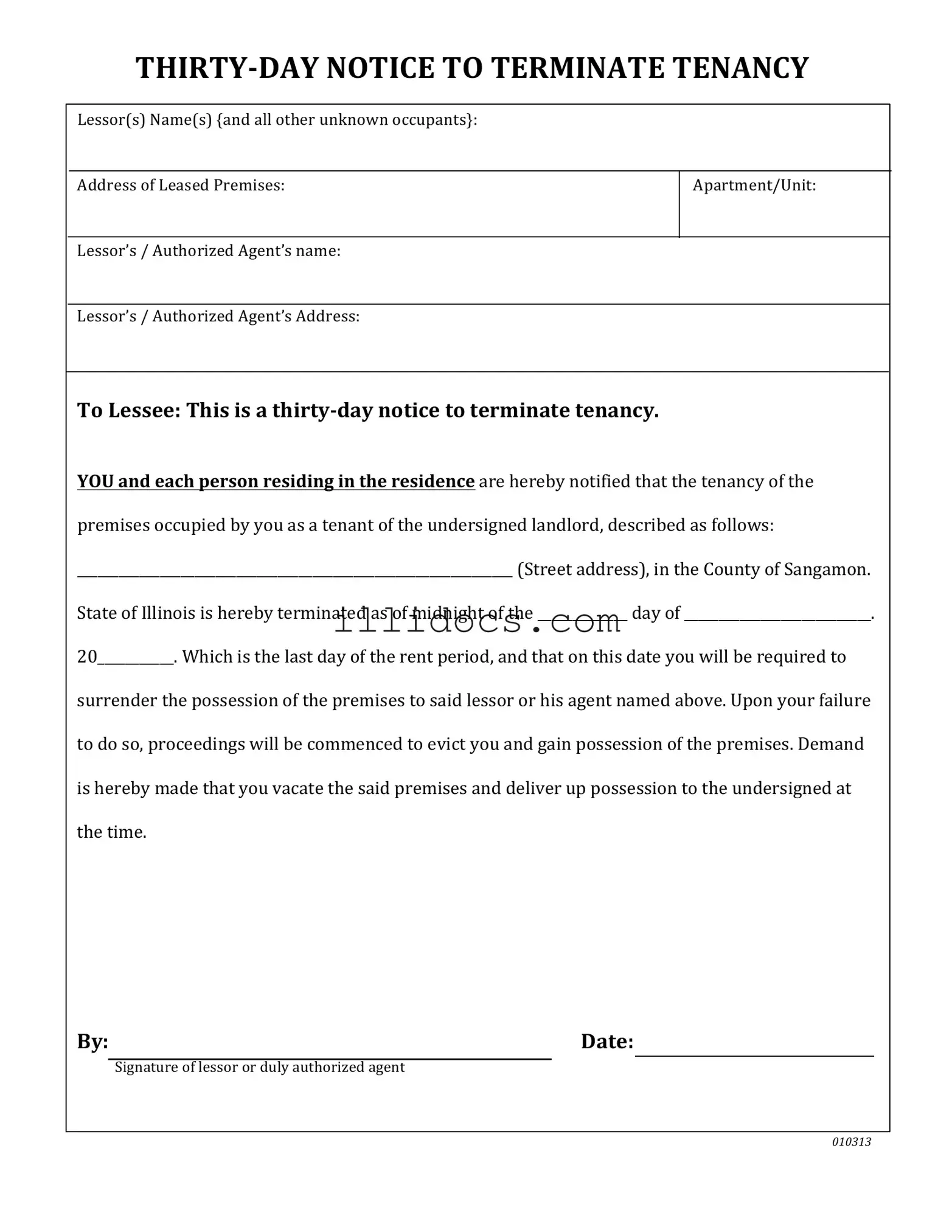What is the Illinois Vacate form?
The Illinois Vacate form is a legal document used by landlords to notify tenants that their tenancy is being terminated. This notice typically provides a thirty-day timeframe for tenants to vacate the rental property. It includes essential details such as the names of the lessor and lessee, the address of the leased premises, and the date by which the tenant must vacate.
How do I fill out the Illinois Vacate form?
To complete the Illinois Vacate form, start by entering the names of the lessor(s) and any other occupants. Next, provide the address of the leased premises, including the apartment or unit number. You must also include the name and address of the lessor or authorized agent. Finally, indicate the termination date, which should be the last day of the current rent period. Ensure all information is accurate and clear before signing the document.
What happens if I do not vacate by the deadline?
If you do not vacate the premises by the deadline stated in the notice, the landlord may begin eviction proceedings against you. This could involve court action to regain possession of the property. It is crucial to adhere to the timeline provided in the notice to avoid any legal complications.
Can I contest the Illinois Vacate notice?
Yes, you can contest the notice if you believe it was issued improperly or if there are valid reasons for your continued tenancy. You may want to consult with a legal professional to understand your rights and the best course of action. If you choose to contest, be prepared to present your case in court if necessary.
Is there a specific format for the Illinois Vacate form?
While there is no official state format, the form should include all necessary elements such as the names of the lessor and lessee, the address of the property, and the termination date. It’s important to ensure that the document is clear and contains all required information to be legally binding. Many landlords use templates to ensure compliance with state laws.
